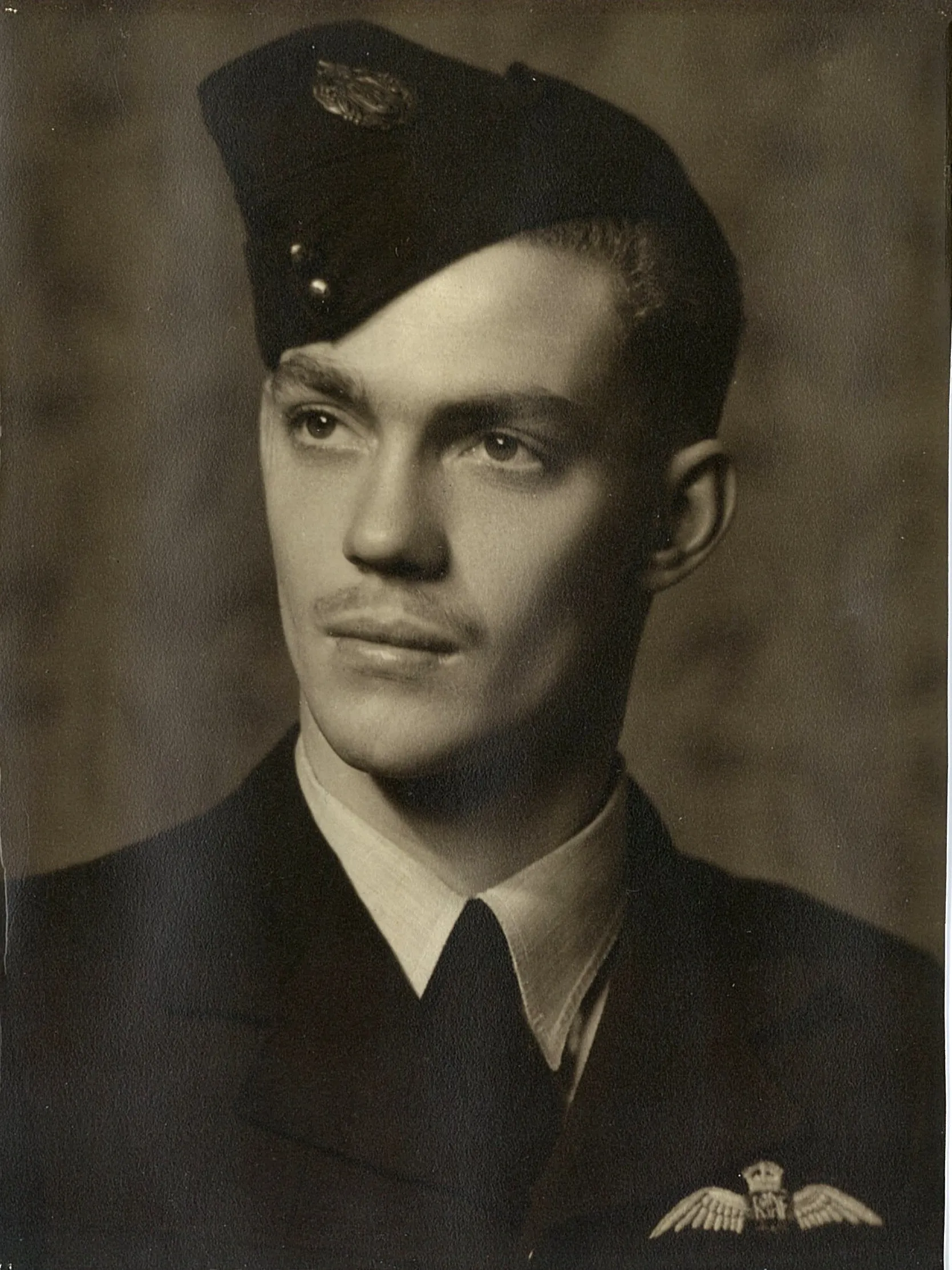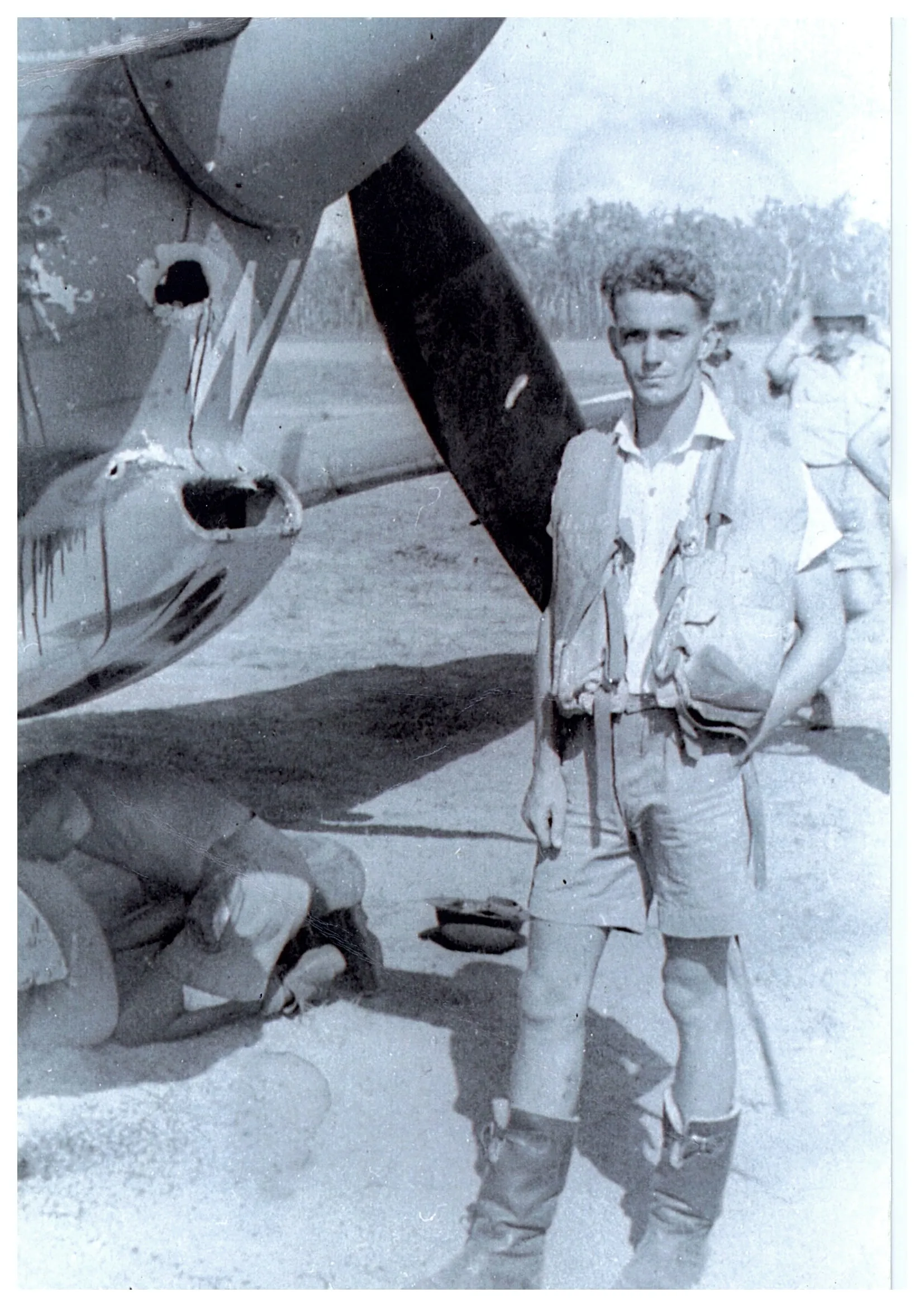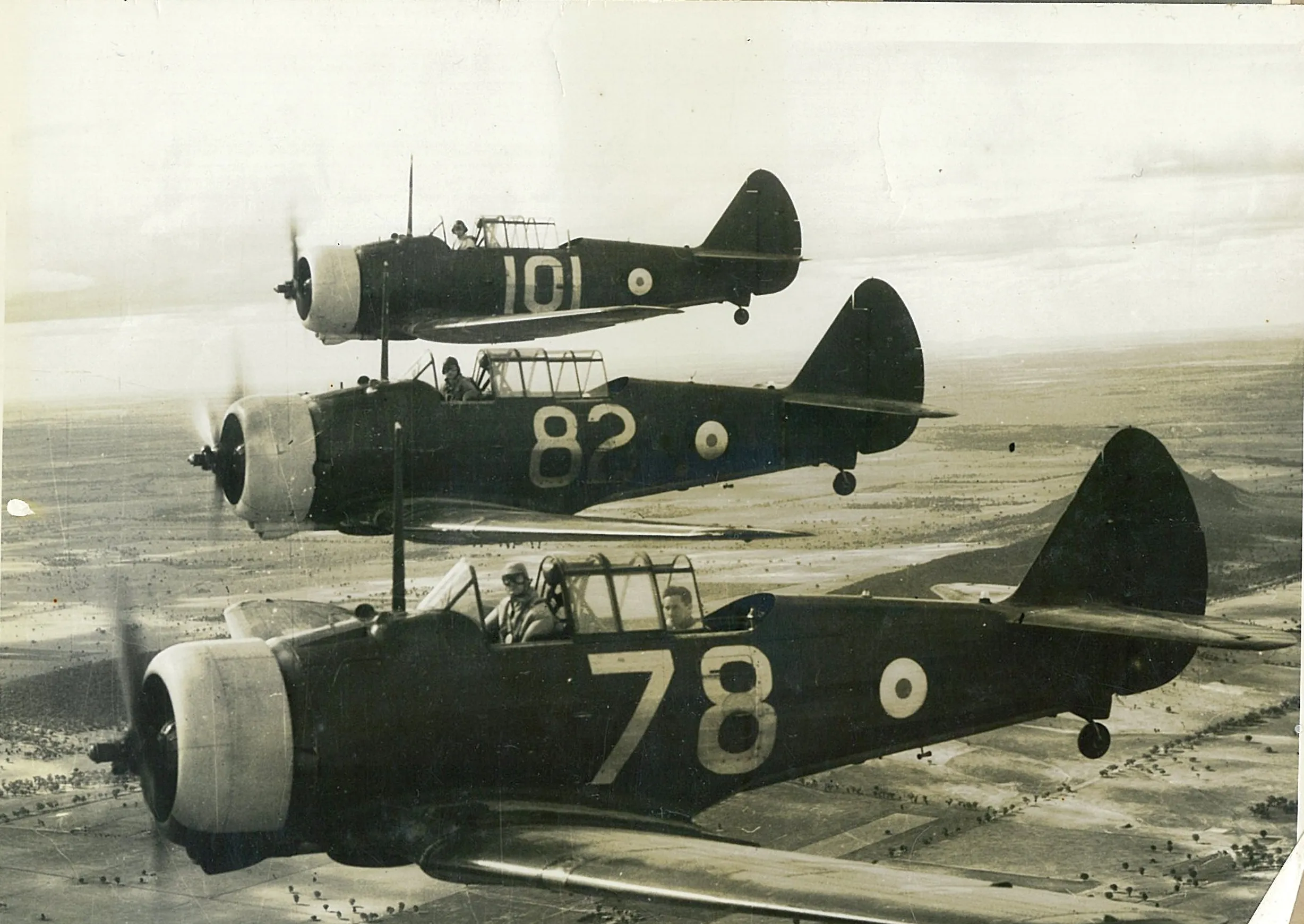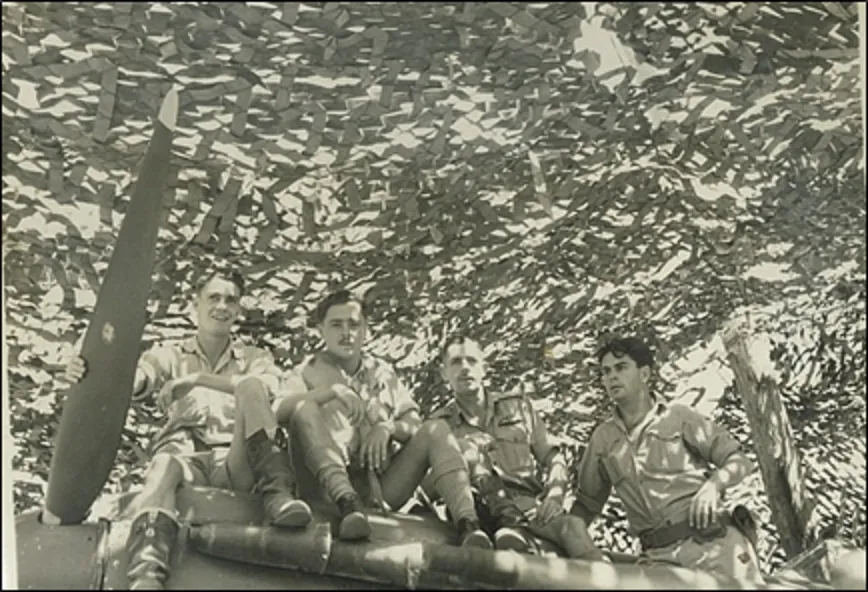FLTLT John Rodney Jenkins 405210



| Squadron/s | 452 SQN 457 SQN |
| Rank On Discharge/Death | Flight Lieutenant (FLTLT) |
| Nickname | Rod |
| Mustering / Specialisation | Pilot |
| Date of Birth | 22 Jan 1921 |
| Date of Enlistment | 02 Feb 1941 |
| Date of Death | 01 Jul 2010 |
| Contributing Author/s | Lesley Halls (daughter) and Cameron Halls (grandson) Edited by Steve McGregor. Darwin Spitfires extract added 2013 The Spitfire Association |
John Rodney Jenkins known as Rod, was born in Maryborough in Queensland on the 22/1/1921, where his father Henry Jenkins was a school headmaster. The family moved to Bowen, where Rod attended primary school then completed secondary schooling at Ipswich Boys Grammar School. Rod then lived in Newmarket in Brisbane where he worked for International Harvester before joining the Commonwealth Bank.
He commenced flying training before the war on Taylor Cubs at Archerfield Airfield. On the 2nd of February 1941, just after his 20th birthday Rod joined the Air Force. Initial training was at Archerfield Airfield on Gypsy Moths and Tiger Moths then at Wagga on Wirraways.
On 16 October 1941 Rod departed Australia for the first time, sailing to Los Angeles and then travelling onwards to Halifax Nova Scotia by train across Canada. From there, they departed for Glasgow, Scotland on yet another ship. Then in December 1941, as part of the Empire training scheme, Rod commenced his Spitfire training at Heston Middlesex.
Further training would be undertaken in 1942 with the 452 squadron at Andreas Air Force Base, where he was described as an "above-average fighter pilot". He was then based at Red Hill in Surrey. During his time in the UK, Rod flew many patrols over Europe. On 18 June 1942, Rod embarked from the UK by ship, sailing via West Africa and South Africa, arriving in Melbourne after almost two months.
From 13 September 1942 Rod was based with the 457 squadron at the RAAF base at Richmond, flying a variety of aircraft including Wirraways, Ryans, Spitfires and Demons. However, the 457 was relocated to Livingstone Air Force Base in the Northern Territory in January 1943, and by May 1943 Rod was based on Millingimbi Island in Arnhem Land, to defend against the Japanese raids.
During his time here, Rod had a number of encounters, and on 28 May 1943 he was involved in a counter-offensive against 8 Japanese medium bombers and 6 Zeros as they attacked Millingimbi Island, Arnhem Land, NT. His closest encounter was during this battle, in which Rod's plane was hit, and "volumes of grey smoke were blowing over the windscreen". I went underneath and ahead of the bombers and opened fire at 300 yards, closing in until I was forced to slip under the nose of the bomber. Volumes of smoke were as I said blowing over my windscreen as I made a steep climbing dive to port. Then I saw the bomber which I had attacked going vertically down. We were then at 15,000 feet. I followed him down, and at 10,000 feet the bomber was still spiralling seawards. This resulted in a victory of one Betty bomber for Rod and a total of 3 enemy Betty Bombers that were destroyed. After the flight he then landed his aircraft safely on Millingimbi. The photograph above shows Rod standing beside his aircraft and the hole in his Spitfire from receiving a cannon shell, which of course caused the fire.
Further action took place over Darwin on 17 August 1943 as Rod was involved in shooting down another Japanese plane:
Meanwhile, 457's Blue Section were vectored northward: Rex Watson and Bill Gregory were ordered to climb to 3000 feet to orbit over Cape Gambier, while Snapper Newton and Rod Jenkins were to make 32000 feet over Cape Fourcroy- respectively over the south-east and south-west corners of Bathurst Island. The controller had positioned them there to cut off two of the usual Japanese withdrawal routes, but both caught the same enemy machine. Newton could not coax his engine to go above 30000 feet, so he told Jenkins to go ahead without him. Gregory saw the enemy first, at 31000 feet just to the south of him, heading outbound. He and Rex Jackson closed slowly in from the side, flying at 190 knots IAS (307, TAS) on a course that was almost parallel with that of the enemy machine. Watson in contrast to Newton, found that his aircraft was performing well, for he kept up with the Japanese machine even with his drop tank on. Once he got ahead of it, he turned in for a beam attack, but the Ki.46 was going so fast that he quickly found himself having to reverse his turn and roll in behind it. From there he fired deliberately three times, repositioning himself before each burst. Despite the failure of one of his canons, he saw hits: puffs of smoke came from its port engine and there were strikes all over its fuselage and rear glasshouse. Watson then pulled out to one side to let his No. 2 attack, and from this broader viewing angle he could see that he had ‘riddled' the enemy machine with his gunfire. Although his own wingman Bill Gregory could not catch up, Rod Jenkins had meanwhile seen the Ki.46 go past, and joined the pursuit. He now came in from directly astern with a good overtaking speed and kept firing right in to 50 metres, when the enemy machine suddenly blew up right in front of him, spraying oil all over his windscreen. The flaming aircraft disintegrated, its broken wreckage plunging away vertically to crash onto Bathurst Island, 16 kilometres north-west of the RC Mission. This confirmed kill was shared between Jenkins and Rex Watson. Jack Newton, held back by his poorly performing engine, had to content himself with firing from extreme range and watching the others get the kill. It was turning out to be an awful day for the 70th Reconnaissance Squadron. [Extract from Darwin Spitfires – [Available on order from Internet]
In 1944 Rod was based in Mildura and attended a fighter pilots course at Port Pirie RAAF base. During 1945, he was based in Parkes, Morotai, and then Labuan,. The curious fortunes of war took place around about this time when Rod unexpectedly met his older brother, Harvey Jenkins, who had been a prisoner of war for some years, when he was based in Morotai and Laboun, before he was repatriated back to Australia. You can just imagine the pleasure the two brothers would have when they found each other alive and well.
After Labuan, Rod made his final flight in October, landing at Oakey in Queensland thus bringing to a close his flying days. In his log book, he described this as "my last landing... and a lousy one!"
After the war, Rod returned to the Commonwealth Bank, working in various parts of Queensland and NSW, before becoming a bank inspector, travelling extensively around Australia. Rod married Joan, also in the RAAF on 25 June 1943. She passed away in March 2006. Rod was also the President of the Spitfire Association for a number of terms and presided over the strong growth of the Association.
Holding a genuine interest in all those he met, Rod was a charming man with a special aura about him. He will be remembered with great affection and warmth, and will be sadly missed. 1/7/2010 set off on his last flight.


